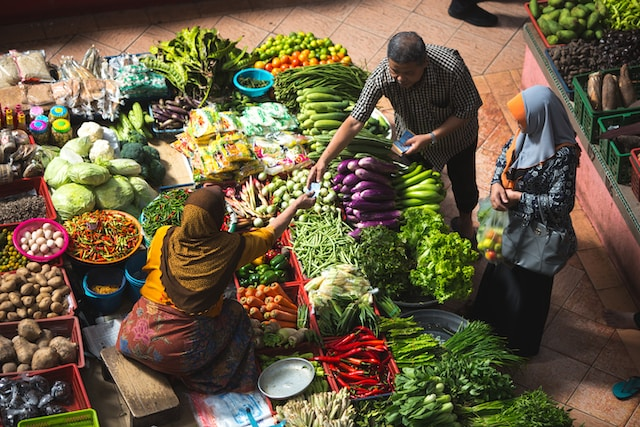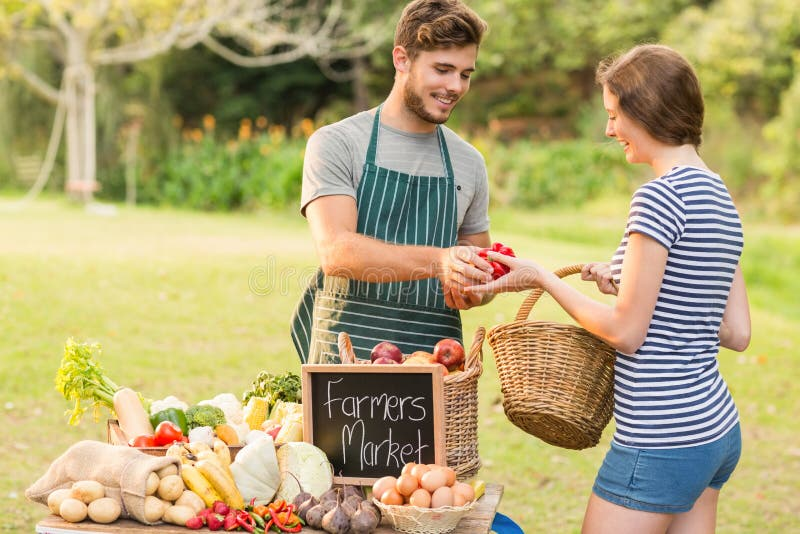Table of Contents

Picture a Saturday morning at a row of tents, where the smell of basil mixes with the sweetness of ripe peaches. People gather around, not just to shop, but to talk with the farmers who grew their food. Scenes like this are more than charming rituals. They represent a direction that food systems need to take if we’re serious about sustainability.
More Than Just Produce on Display
On the surface, a farm market looks like a collection of tables stacked with vegetables, bread, or jars of honey. But beneath that, it functions as a small-scale model of resilience. Every purchase supports regional farms, reduces transport miles, and strengthens food security close to home.
Visiting a farm market also gives people a direct experience of this system in action, where the connection between grower and customer is visible and immediate. Consider a simple head of lettuce. Buying it from a farm 20 miles away avoids the fuel, packaging, and storage costs tied to lettuce shipped across the country. It may not feel dramatic, but the cumulative effect is significant.
Not everyone who shops at these markets is calculating carbon footprints, of course. Many are simply chasing flavor. The point is, markets make it possible to satisfy taste and ethics at the same time.
Why Face-to-Face Still Matters
Buying groceries at a supermarket is fast, but it’s impersonal. You fill your cart, scan your items, and leave. At a farm market, there is eye contact and conversation. You hear a farmer talk about how their hens live or why this year’s tomato crop came in late. Those small exchanges create accountability and remind us that food is not just a product but the result of work and care.
Sustainability is often framed as data and efficiency. Yet it also comes down to relationships. People who know the story of their food tend to value it more and waste it less.
Economics That Stay Local
One common critique is that farm markets cater to those with disposable income. There is some truth to that, but it is also changing. More cities are investing in public market spaces, and voucher programs linked to SNAP stretch further at many stands. These efforts make high-quality food more accessible while keeping revenue within the community.
The idea is not that heirloom tomatoes suddenly become cheap for everyone. The larger point is that a system with local reinvestment is healthier than one where most dollars flow out through national chains.
Can They Really Scale?
Skeptics often argue that farmers markets cannot possibly feed an entire city. It is a fair question. No one expects them to replace supermarkets completely. What is emerging instead is a hybrid model.
Regional distribution hubs, shared logistics networks, and online platforms such as Local Line or Barn2Door allow small farms to combine resources and supply larger buyers like schools or restaurants.
The future is likely to be a blend of traditional markets and more coordinated local supply systems. One doesn’t cancel out the other.
Taste as a Quiet Motivator
Let’s be honest. The sustainability pitch only goes so far. Flavor does the heavy lifting. Anyone who has tasted a peach still warm from the tree knows the difference. Once people notice that, they begin to ask where food comes from and how it is grown. That curiosity can move culture faster than a policy report.
Chefs understood this long ago. Restaurants that highlight local sourcing, from Alice Waters’ early menus to today’s neighborhood bistros, have made “farm to table” feel less like a trend and more like an expectation.
Living with the Seasons Again
Markets also bring back seasonality. You will not find asparagus in December or strawberries in January, and that absence makes their return in spring feel meaningful. Seasonal rhythms, once ignored, are one of the simplest forms of sustainability. They cut down on the environmental cost of forcing food to be available year-round and help us reconnect with cycles of growth.
There is a lesson in patience here. Abundance does not mean endless sameness. It means variety across the year.
Looking Back While Moving Forward
In many ways, farm markets resemble the past, before global supply chains dominated. That is not nostalgia. It is a recognition that some older systems worked better than we realized. Modern tools can still play a role, whether it is mobile payment systems, online ordering, or digital platforms for farmers to organize distribution. Technology can make markets more efficient, as long as it supports rather than replaces the human element.
Bringing It Together
Farm markets are not perfect solutions. They cannot solve every challenge of food production. But they succeed in connecting three things that often remain separate: environment, economy, and experience. They remind us that food is not only about fuel. It carries stories, relationships, and culture.
So the next time you walk through a market, notice the mix of conversation, the fresh herbs, the quiet exchange of goods. The system may seem simple, but that is precisely why it works. Sometimes the most sustainable path is the one that feels most familiar.








